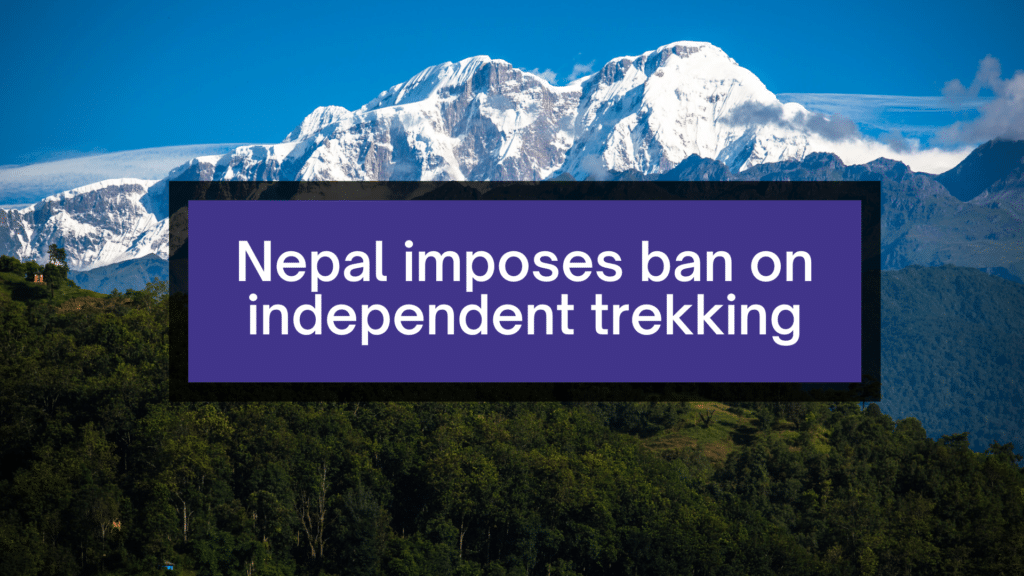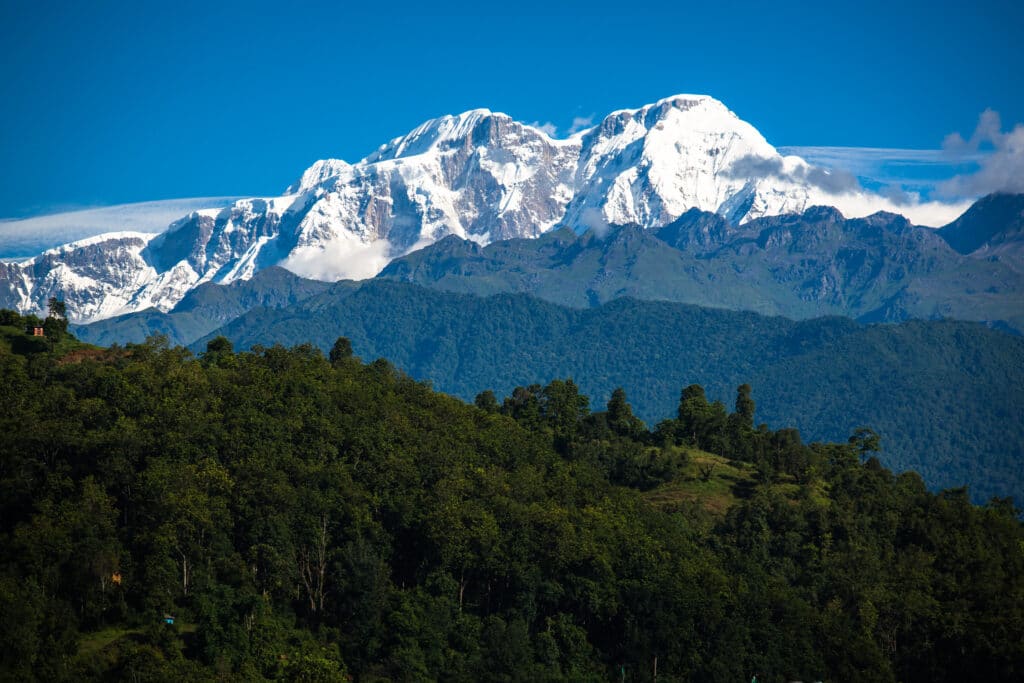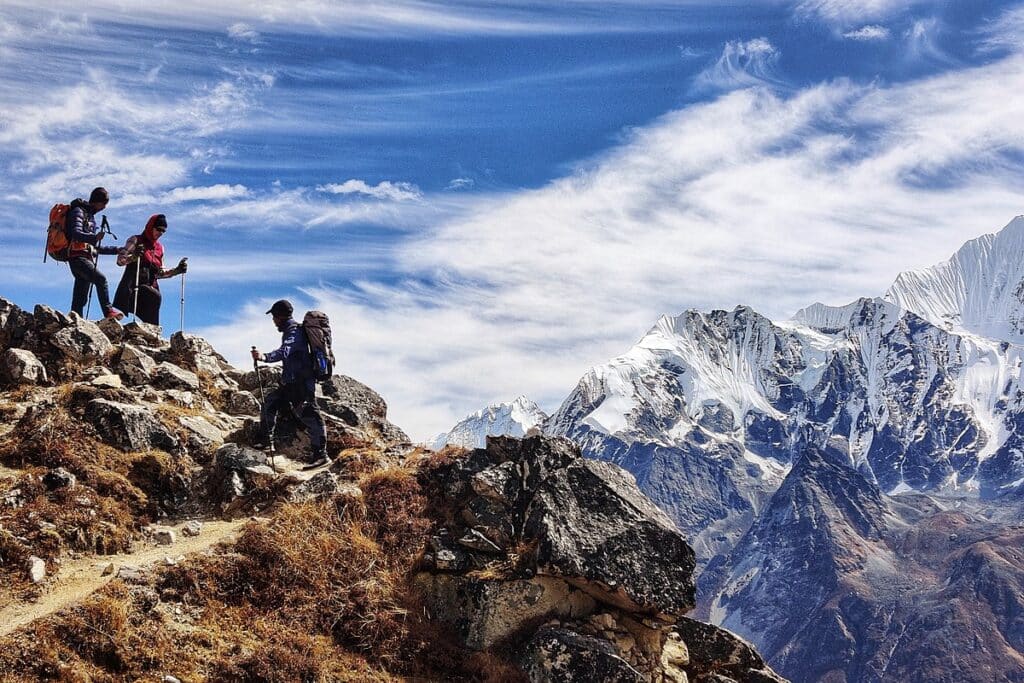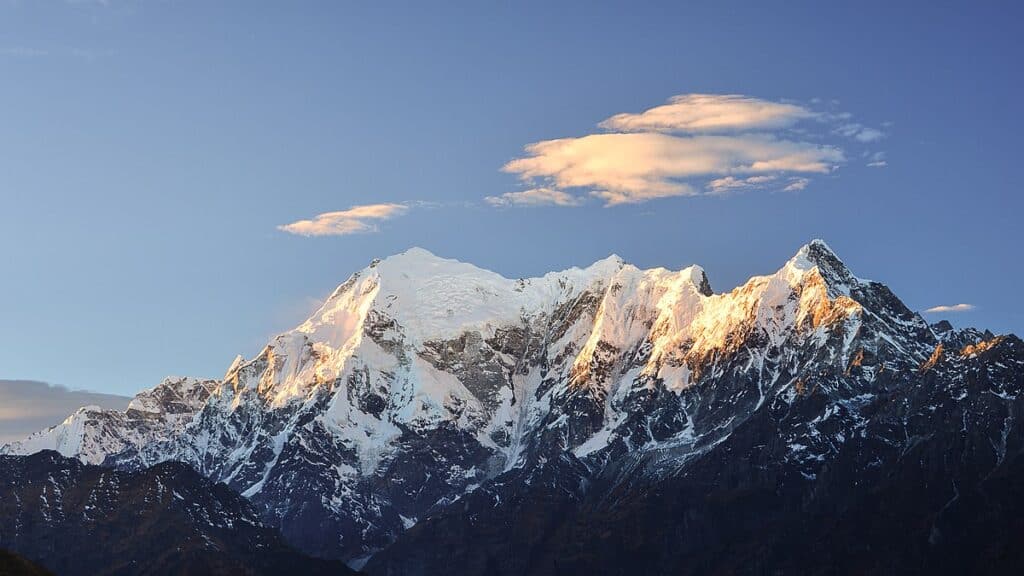From 1 April 2023, independent trekking will be banned in Nepal’s national parks and protected mountain regions.

Home to eight of the world’s tallest mountains, Nepal attracts thousands of trekkers annually. Many of these visitors choose to hike unguided.
Numbers released by the Nepal Tourism Board (NTB) show that upwards of 19,000 people trekked unguided in 2022. The NTB hopes to curtail this number in order to make trekking safer for visitors and to increase employment in the tourism industry.
The practicalities – what the ban means

Under the new law, would-be trekkers must source accredited guides through agencies registered with the Trekking Agencies Association of Nepal (TAAN) – a union of over 2,000 government-endorsed trekking agencies.
Trekkers will also have to obtain a Trekkers’ Information Management System (TIMS) card. Essentially a permit, the TIMS card will cost 2,000 Nepalese rupees (about £12.50/$15/€14).
In addition to trekkers, the ban will also apply to mountain bikers.
Trekking in Nepal – becoming increasingly dangerous

Making trekking safer is one of the key goals of the initiative. Perhaps the most obvious danger posed is that of getting lost. The NTB suggests the number of annual fatalities of missing hikers is as high 15, although missingtrekker.com disputes this figure.
Other risks include altitude sickness, exposure to extreme cold, and the likelihood of a whiteout. This disorientating weather condition renders snow-covered areas indistinguishable, thus making navigation impossible.
The effects of global warming have also made trekking in Nepal increasingly dangerous. Climate change has exacerbated the extremity of monsoon season in the lowlands, making landslides in the mountains much more frequent.
Further to increasing safety for trekkers, the NTB also aims to boost employment in the country’s tourism sector.
The pros and cons – opinions are split on the ban

Mountaineer, journalist, and author of Himalaya: A Human History, Ed Douglas, bemoans what he perceives as increasing bureaucracy and inhibiting costs.
Douglas, who also edits the hiking publication, Alpine Journal, added, “Trekking agents will be very pleased because it’s more business for them, but forcing tourists to behave in a certain way will put some people off.”
Furthermore, he doubts that the ban will make trekking safer and argues that the country doesn’t have enough qualified guides to cope with demand.
Tour operator Sudeep Kandel admits that “the rule has good intentions of ensuring the safety of trekkers” but worries that “it might not be the right instrument for doing so.”
Kandel’s company – Himalayan Adventure Labs – is currently developing a Himalayan Trekking Safety Initiative. This initiative will provide trekking guides with satellite phones and trackers, medical insurance, and search-and-rescue coverage.
The news comes just as the spring trekking season truly gets under way in Nepal.

